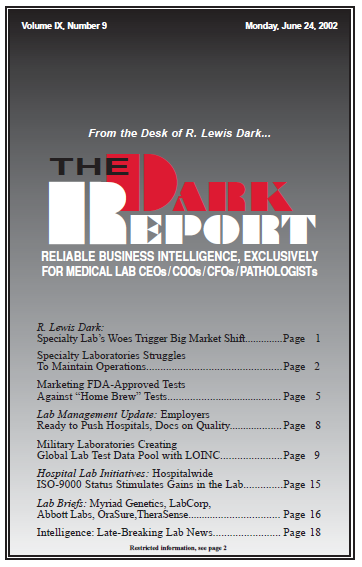CEO SUMMARY: It’s a laboratory regionalization project without precedent because of its worldwide scale. Within the Armed Forces, laboratorians are working to seamlessly integrate laboratory test data generated by laboratories within the Army, Navy, Air Force, and Veterans Administration. LOINC is the tool used to link participating laboratories. The eventual goal is to create a …
Military Labs Creating Global Lab Test Data Pool With LOINC Read More »
To access this post, you must purchase The Dark Report.


